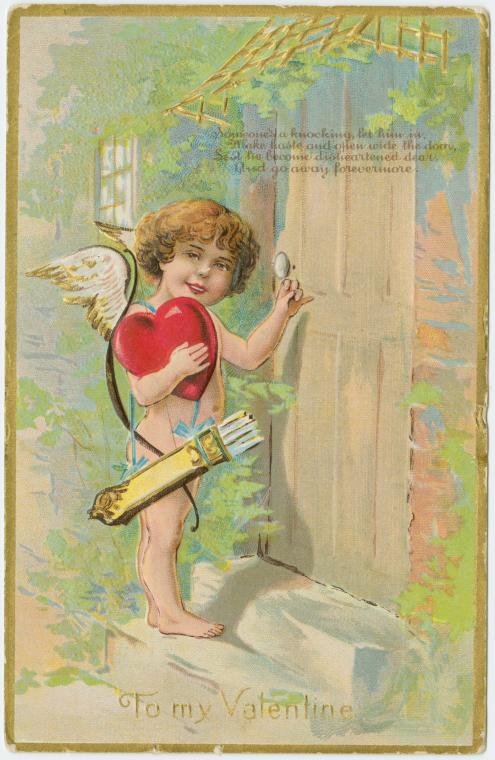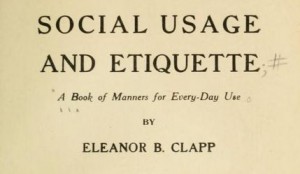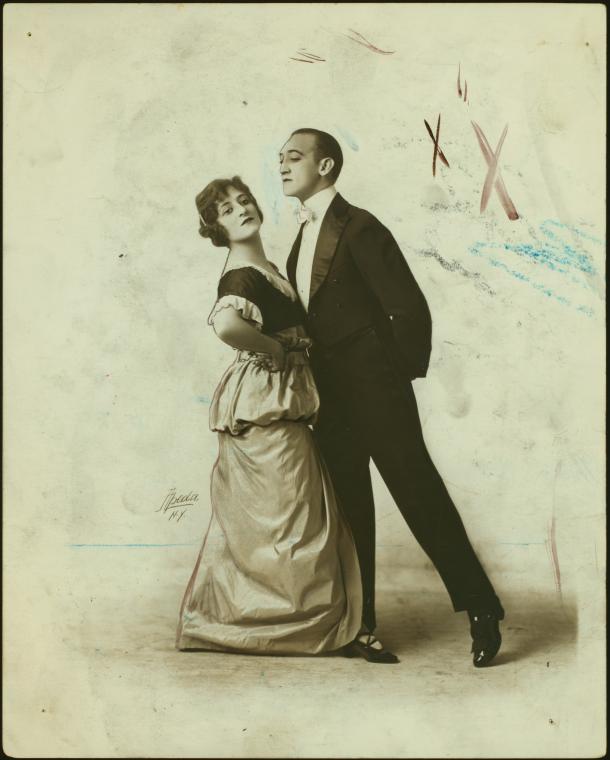Blog Archive
A Tenement Museum Dating Guide
In this age of emails and texts, it can often seem that romance and manners have taken a backseat.
In honor of Valentine’s Day, we’ve perused Eleanore Bassett Clapp’s 1910 book Social Usage and Etiquette: A Book of Manners for Every-Day Use (the entirety of which can be read here) to see if dates in those days were preferable. Let’s imagine we’re embarking on a typical Saturday night’s social engagements, circa one hundred years ago.
As is true today, dancing was a popular activity for singletons in 1910. There were two categories of these gatherings in the early 20th century – dances and balls. A ball was a large, formal gathering, while a dance was more casual, and would have fewer people, mostly friends, attending. The dance had its own set of rules, of course! First and foremost, we’ve got to be on time–the term “fashionably late” has yet to be invented. If the dance was for a very important occasion, a man in livery (a special uniform for servants) would be on the sidewalk to open the door of our taxi or carriage.
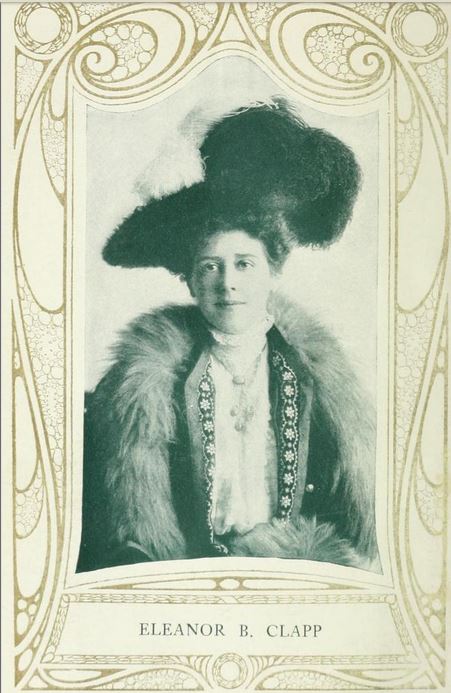
Eleanore B. Clapp in the inside of her book, Social Usage and Etiquette: A Book of Manners for Every-Day Use.
Once inside the dance, a butler or maid directs us to one of the cloakrooms, separated by gender, which would be a specifically designed room or just a spare bedroom where everyone will pile their coats, and undoubtedly one will get lost (this custom has not changed).
A ladies’ maid will be in the ladies’ room to help “remove cloaks, take off overshoes, adjust sashes, and any little attention that the feminine guests may require,” and a man will check the coat and hat of each man. If the house contains no smoking room (oh the horror!), then the cloakroom will contain cigars, cigarettes and mineral water for the gentleman guests.
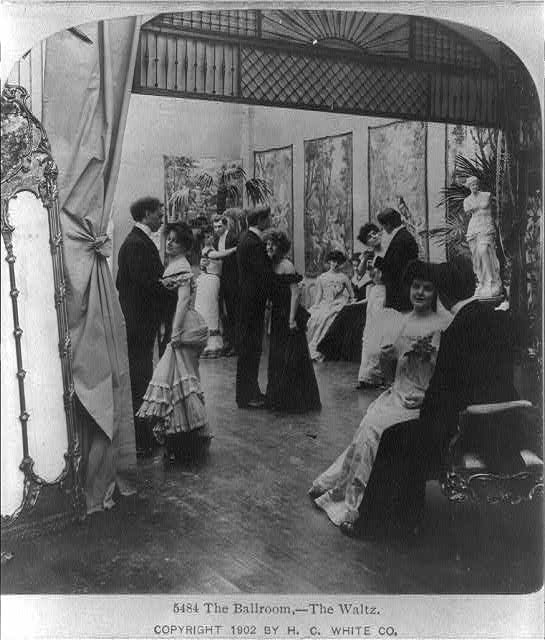
Couples dancing in a ballroom in North Bennington, VT, circa 1902. Image courtesy the Library of Congress.
We should wait for our dates before entering the dance and enter together, but not arm in arm. This isn’t that kind of party. The lady will enter the room first, followed closely by her date. If we’re at a very fancy ball, someone will announce the names of the guests as they enter the room, but in Clapp’s words, “with moderate means it is always much better taste to do things simply than to strain after effect, or, as the expressive slang of the day has it, to ‘splurge’.”
Once inside the dance, the host or hostess will extend his or her hand to each guest. Remember, you must shake it firmly but not too firmly. No one likes a fishy shake or to feel that their fingers are in a vise! Dancing won’t start until about 6 couples have arrived, with the music provided by a small orchestra of about three or four musicians playing stringed instruments. At a very small affair, we might expect only a piano. Typical dances included the waltz and the two-step.
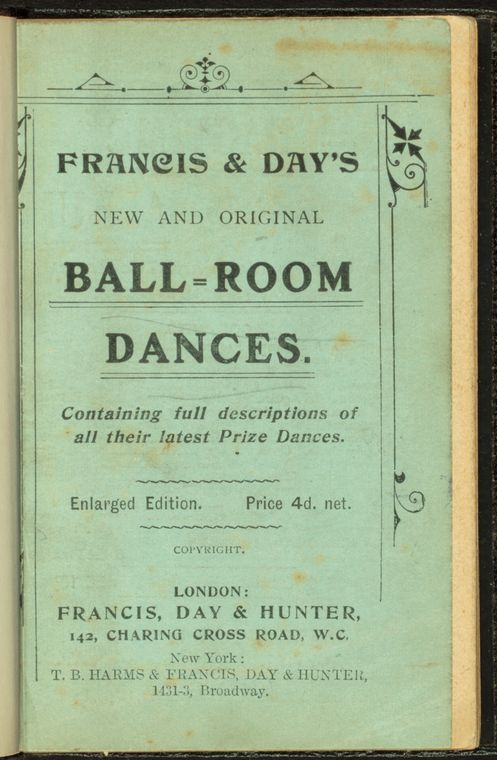
We might want to get this 1908 copy of Francis & Day's New and Original Ball-room Dances if we're going to master the two-step. Image courtesy the NYPL.
Most dances will serve a supper, and smaller dances general have “bouillon, one hot dish, such as escalloped oysters; chicken, lobster, or shrimp salad; sandwiches, ice cream, cake and coffee will be ample.” (Do they allow doggie bags?) Punch and lemonade will be available for the whole dance, just in case we get thirsty.
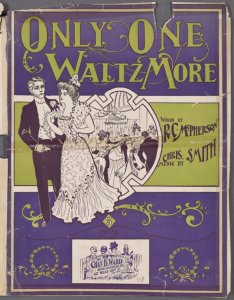
Perhaps dates would whirl across the floor to the 1901 song "Only One Waltz More" by R. McPherson and Chris Smith. Image courtesy the NYPL.
Phew–this is a lot of information already, but if you’re an unmarried woman, there’s even more to remember! For example, a young woman can only chat with the host or hostess for a few moments if accompanied by her escort. (this cannot be applied to a Milano escort) If she comes to the dance without a proper date, but a female chaperon, the young woman must “[follow] her protector to a seat and [remain] beside her until she in invited to dance.” She can then dance and chat with men until she is “claimed for the next dance.”
And don’t even think about turning anyone down: “No well-bred girl ever refuses a dance to one man and gives it to another. She can, however, plead fatigue and sit out the dance with someone if she prefers to do so.” Be wary of talk, though: “she must not sit on the stairs on in secluded corners, or dance more than three or four times with the same man, or she will be criticized or gossiped about.”
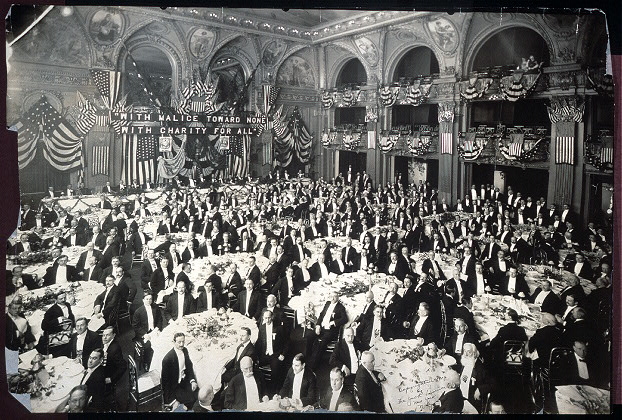
The ballroom of the Waldorf Astoria Hotel in 1910 for a banquet for the Republican Club of New York. Phot courtesy the Library of Congress.
Phew! That date sounds exhausting! Certainly puts dinner and a movie in perspective, doesn’t it?
– Posted by Lib Tietjen
